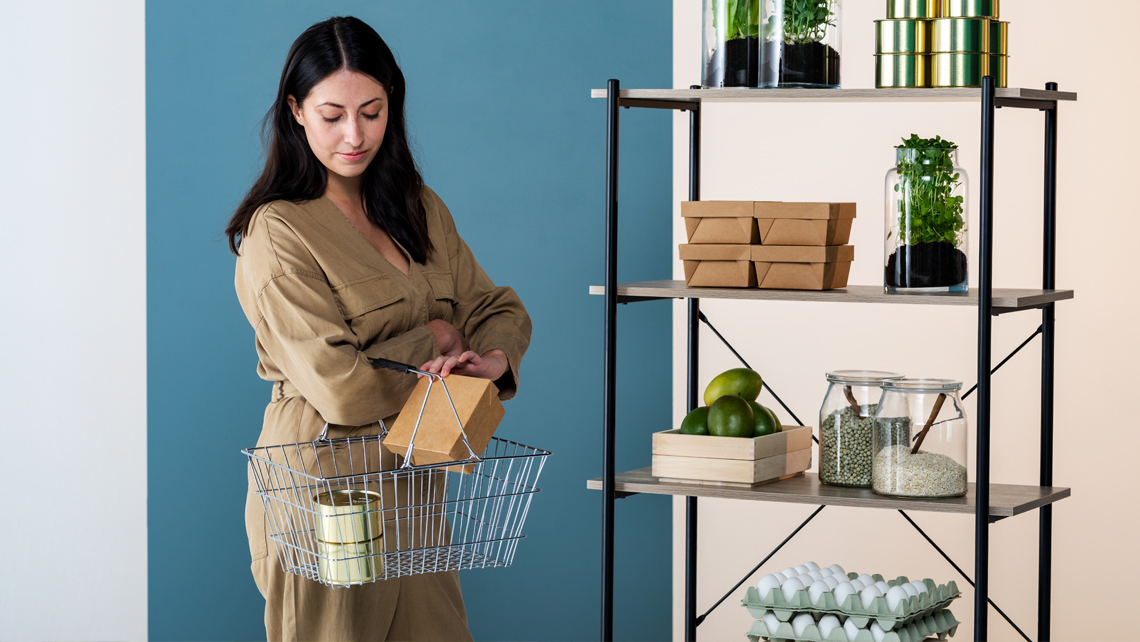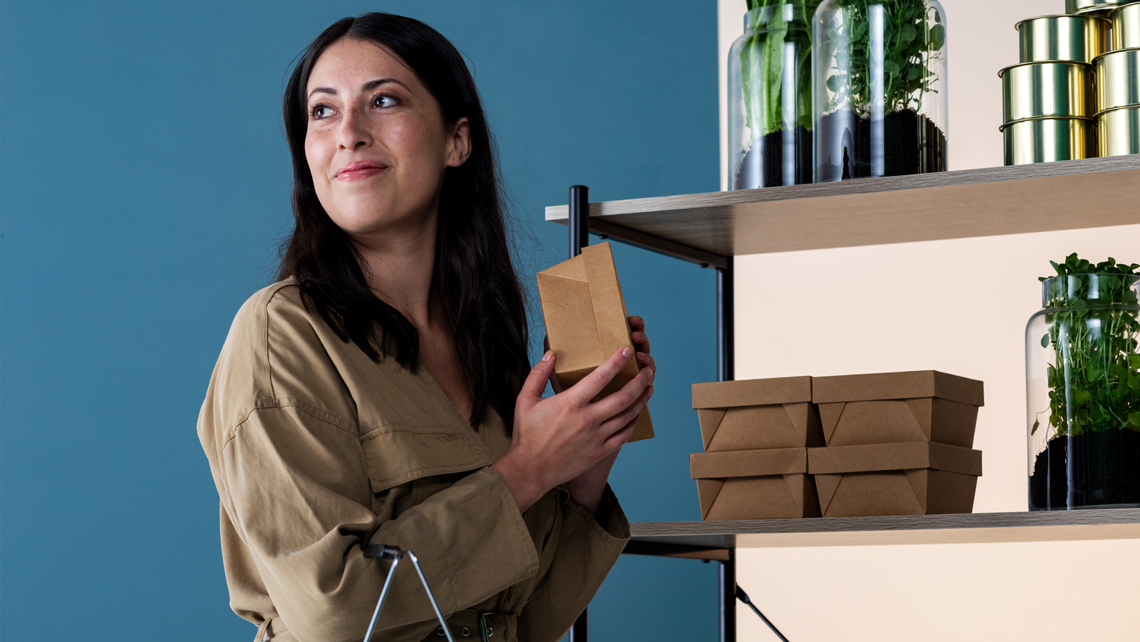Recently, we investigated what food and its packaging could look like in ten years’ time. In one of the future scenarios, practicality is the most important feature of food packaging for the consumers and everything else – including sustainability – is secondary. As people’s lives are increasingly busy and fragmented, the level of convenience is unforeseen and to succeed, companies within the food industry are focused on eliminating all forms of consumer pain points on physical and digital platforms.
In this future, titled “Practicality on-the-go”, most consumers perceive visiting a physical location as a hassle. The challenges of last mile deliveries have been solved and food and related services – everything from online grocery shopping to highly personalized catering business – are delivered to the home door. Every retailer has an app and every restaurant is a part of a food delivery platform.
What is the role of food packaging in this digitally driven world of food purchasing and consumption?
Fit-for-purpose packaging
In this world, food must be easy and functional, requiring minimal thought and effort from the consumer. Packaging must also have the features that fit busy lifestyles, on-the-go consumption, and last mile deliveries. Packaging will be stripped down to bare practicalities that aim to ensure the ease of delivery and use. It is light, portable and resealable, and has no complicated frills.
“In practice, this would translate into a lot of functionalities under the surface, especially when talking about fiber-based packaging,” says Antti Matula, Senior Vice President, who is leading the global product lines and business development for the pulp and paper segment at Kemira. He discussed the opportunities and challenges that the four different future scenarios could mean for the packaging value chain in a recent webinar.
Packaging will be stripped down to bare practicalities that aim to ensure the ease of delivery and use.
Here, the unsung hero of fiber-based food packaging – chemistry – plays a crucial role. “Chemistry is needed for creating virtually every characteristic of the paper and board used in food packaging. Often, the advanced chemistry and technology behind the solutions remain unseen,” Matula points out. Without chemistry expertise, paper and board cannot be converted into fit-for-purpose packages that have the required stiffness, strength, and hydrophobicity and that are hygienic and safe to use.
“The most important feature of food packaging is to protect both the packaged product and the consumer, from hot liquids, grease and similar. The strong movement away from plastic has meant new requirement for the barrier properties of foodservice board, as the packaging value chain is looking to replace e.g. PE and aluminum with more sustainable solutions.”
Lightweight brand differentiation
Furthermore, as every gram of weight adds to the delivery cost, the packaging needs to be as light as possible while still providing protection to the products during transport. Packaging innovations that respond to the demands of booming e-commerce are the ones that will boost the future growth of the packaging solutions sector, a McKinsey study suggests.
“The demand for lighter weight packaging has been on the rise for long, and the development described in this scenario would only speed up the trend. Lightweighting is also one of our important focus areas in R&D,” Matula states. “Working together with our customers, we have successfully reduced the use of fiber e.g. in folding boxboard significantly without putting end-product strength and quality in jeopardy.”
The demand for lighter weight packaging has been on the rise for long, and the development described in this scenario would only speed up the trend.
When food is purchased online instead of picked up from grocery store shelfs, food packaging might not need to be as visually appealing to attract the consumer. Also, there’s no room for complex shapes in the name of brand differentiation in packaging that is intended for a multitude of different delivery solutions.
“This is an interesting thing to consider. On the one hand, packaging is stripped-down and practical to support deliveries and shipments. On the other hand, I would assume that the fast-paced urban consumers who consume take-out food on-the-go still also want to express their brand loyalty. I wouldn’t cross brand expression off from the list of required features.”
Climate-talk exhaustion?
The expert panel argued that in the future described in this scenario, the consumers are exhausted by climate talk and struggle to see the value in recycling. Instead of being a normal part of people’s everyday lives, recycling has become a minefield of splintered policies and fragmented regulations, as authorities have been unable to form a shared agenda for tackling climate change.
“The lack of recycling effort and common policies would turn the current focus from recyclability to efficient disposal and end-of-life solutions,” Antti Matula states.
“One thing to note from the discussion around this scenario is the importance of convenience also in recycling. The consumers need to be willing to go the extra mile to be part of the recycling value chain. This means accessible infrastructure for collecting the packaging waste but also ensuring the ease of sorting the waste for the consumer.”





